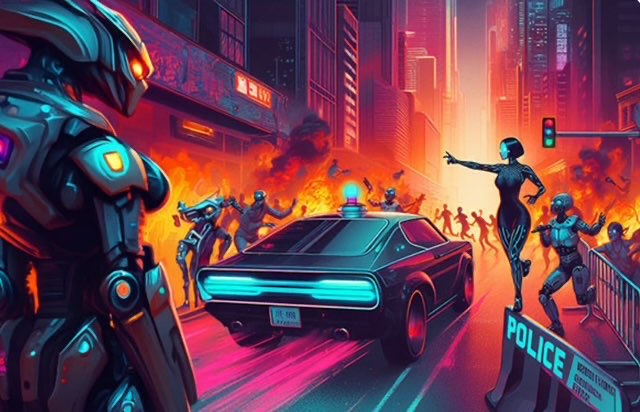StoryCasting: Bullet Points to Belief
- Christopher Owens

- Jan 28
- 3 min read
Updated: Mar 4
Christopher "Buck" Owens
How do we turn the plausible into the compelling?
What sets Threatcasting.ai apart from its counterparts is its emphasis on storytelling as a key component in threat analysis and defense preparation. By translating complex analytical data into engaging narratives, Threatcasting.ai makes information more digestible, relatable, and actionable for a wide audience. Through the use of mediums such as graphic novels and interactive workshops, the company ensures that crucial insights are not only understood but also resonate with their audience on a deeper level.

After retiring from active duty, I studied International Relations and then International Development. I devoured courses on qualitative research, sociological studies, development strategies, organizational behavior, and various types of gap analysis. In the past decade, however, I’ve learned that very complex ideas often need to be reduced to a few PowerPoint slides with bulletized information. Senior leaders and decision-makers have been trained to be briefed. Can we provide them more? Do they need meaning and nuance to make informed decisions? I want them to want more.
Analysts collect data, yes. To get that data, we ask a fair amount of Why? and How? questions. We also like For how long? and Who else? and an occasional Where would we see that happen? and What else could this impact? Studying trends means going back through the history of an issue, build an understanding of it, and then extrapolate how that trend might continue or change based on intersections of other trends. That gets complex very quickly. Then, add the human-element. In this case, I’m talking about how people - adversaries, industry competitors, and even your coworkers and employees - would interact or influence the data. At this point, I argue, your leaders need more than bullet points. Better yet... create a vignette akin to a foresight biosphere (a term I'm playing with) where all your drivers influence one another – as they constantly do.
How do we turn the plausible into the compelling? I’m not sure yet, but I’ve been experimenting. Data from a Threatcasting workshop, for instance, is rich with nuanced information: a series of plausible scenarios built from SME-driven insights into emerging trends. What Threatcasting provides that other models don’t, are character-driven situations. A spreadsheet of intricate data that also includes people with names and backgrounds. I want to make that data come alive and propose that building strategies that focus on technology trends alone, for instance - without considering how people, social norms, political impacts, and the resources needed to develop technology - create myopic results.
I think data can be presented more compellingly than the basic spreadsheet or slide deck offers. From left to right, below, the same scenario could be presented as a future news article, a simulated government or corporate position paper, or even a fictional short story. Each of these formats create different opportunities to convert the plausible into the compelling. Some formats would resonate more with government agencies, private industries, or consulting firms – depending on their relationship to the topic.

In partnership with Springer Nature, I’ll be publishing a book to join the Threatcasting Lecture Series. In StoryCasting, I’ll walk through the experimental process of converting data from a Threatcasting workshop into a fully developed short story, using the three- or five-act play model. Following the precedent set in the book Science Fiction Prototyping, I lean on the speculative fiction genre. Characters in the short story are not mere observers of new threats and technological changes, but influence the way information is understood, how a law enforcement agency can become aware of a novel threat, and the interaction between global institutions.
In 2023 I completed a manuscript of a full-length novel, Doublin’, using many of the same concepts used in other foresight-to-story experiments. I am interested in partnering with other futurists, strategic planners, and writers who wish to experiment in small-scale projects to turn the plausible into the compelling for their organizations.
Disclaimer: The views expressed in this article are those of the author(s) and do not reflect the official policy or position of the United States Government.




Comments